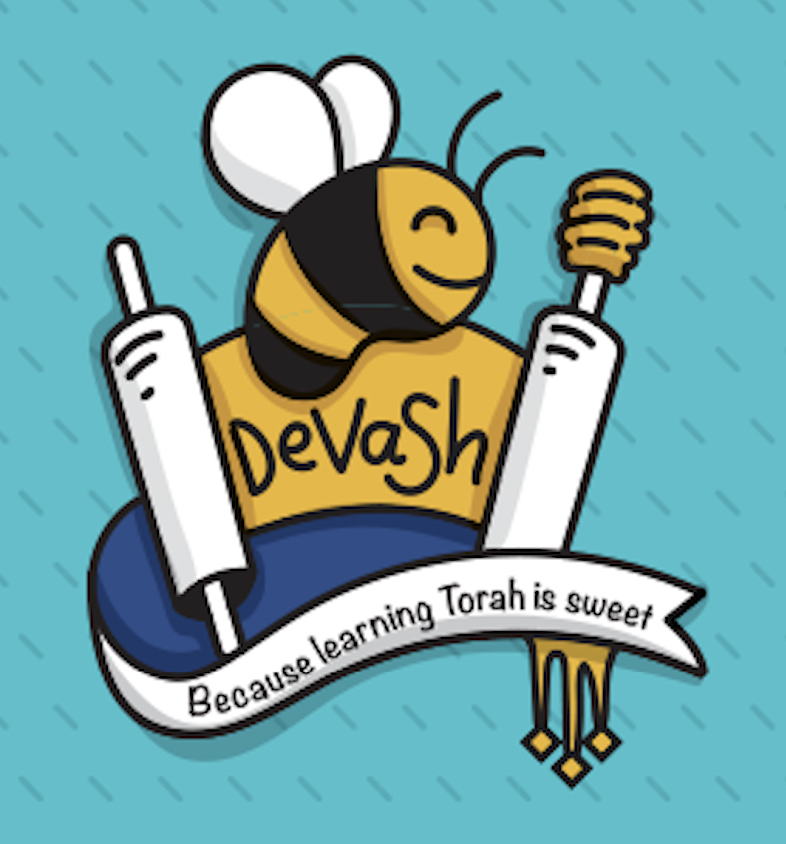
Parashah Scavenger Hunt שְׁאֵלוֹת הַשָּׁבוּעַ
Welcome to Devash's Parashah Scavenger Hunt for Parashat Pekudei!
Aliyah 1 (Shemot 38:21-39:1)
- How much gold total was collected for the mishkan?
- Who was Betzalel’s grandfather?
Aliyah 2 (Shemot 39:2-21)
- How many rows of stones were in the חֹשֶׁן (hoshen, breastplate)?
- Which row of the חֹשֶׁן (hoshen, breastplate) contained the precious stone called שֹׁהַם (shoham), often translated as lapis lazuli?
Aliyah 3 (Shemot 39:22-32)
- What fruit is used to describe an object on the edge of Aharon’s מְעִיל (me’il, coat)?
Aliyah 4 (Shemot 39:33-43)
- One of the objects for the mishkan is described as טְהוֹרָה (tehorah, pure); what is it?
Aliyah 5 (Shemot 40:1-16)
- On which date was the mishkan supposed to be set up?
- What gets placed between the אֹהֶל מוֹעֵד (Ohel Moed, Tent of Meeting aka the Mishkan) and the מִזְבֵּחַ (mizbe’ah, altar)?
Aliyah 6 (Shemot 40:17-27)
- Which got set up first, the מְנוֹרָה (menorah) or the שֻׁלְחָן (shulhan, table)?
Aliyah 7 (Shemot 40:28-38)
- Why couldn’t Moshe enter the mishkan after it was all set up?
- What would Benei Yisrael do when the cloud over the Mishkan rose?
Look anywhere in the parashah to find the answer to these questions!
- What replaced the cloud over the mishkan at night?
- Where would you find water in the mishkan?
- Can you calculate how many shekels are in a כִּיכָּר (kikar, a weight measurement) just from the information in this week’s parashah?
- The כֹּהֵן גָּדוֹל (kohen gadol, high priest) had a special headband called the צִיץ (tzitz). What did the tzitz have in common with tzitzit (besides the way they’re spelled)?
From the Haftarah
Haftarah for Sefardim: Melakhim Alef 7:40-50
Haftarah for Ashkenazim: Melakhim Alef 7:51-8:21
- Haftarah for Sefardim: How many pomegranates were on the columns?
- Haftarah for Ashkenazim: Where did Shlomo get the אָרֹן (aron, ark) from?
Scroll down to see the answers!

Answers:
Aliyah 1
Aliyah 2
Aliyah 3
- רִמּוֹן (rimon, pomegranate) (39:24-26)
Aliyah 4
- The מְנוֹרָה (menorah) (39:37)
Aliyah 5
Aliyah 6
- The שֻׁלְחָן (shulhan, table) was first (40:22) and the מְנוֹרָה (menorah) was next (40:22-25)
Aliyah 7
From anywhere in the parashah
- Fire (40:38)
- In the כִּיּוֹר (kiyyor, washing basin) (40:30)
- 1 kikar = 3,000 shekels. Here’s how you figure that out: 603,550 people each gave a half a shekel of silver (38:26), which would come out to 301,775 shekels. The Torah describes the total of silver as 100 kikar and 1,775 shekels (38:25). If: 301,775 shekels = 100 kikar + 1,775 shekels Then: 300,000 shekels = 100 kikar Therefore: 3,000 shekels = 1 kikar
- It had a פְּתִיל תְּכֵלֶת (petil tekhelet, blue cord) attached to it (39:31, and compare to Bemidbar 15:38)
Haftarah
- Haftarah for Sefardim: 400 (Melakhim Alef 7:42)
- Haftarah for Ashkenazim: עִיר דָּוִד (Ir David, the City of David) also known as צִיּוֹן (Tziyon) (Melakhim Alef 8:1)
-------------------





